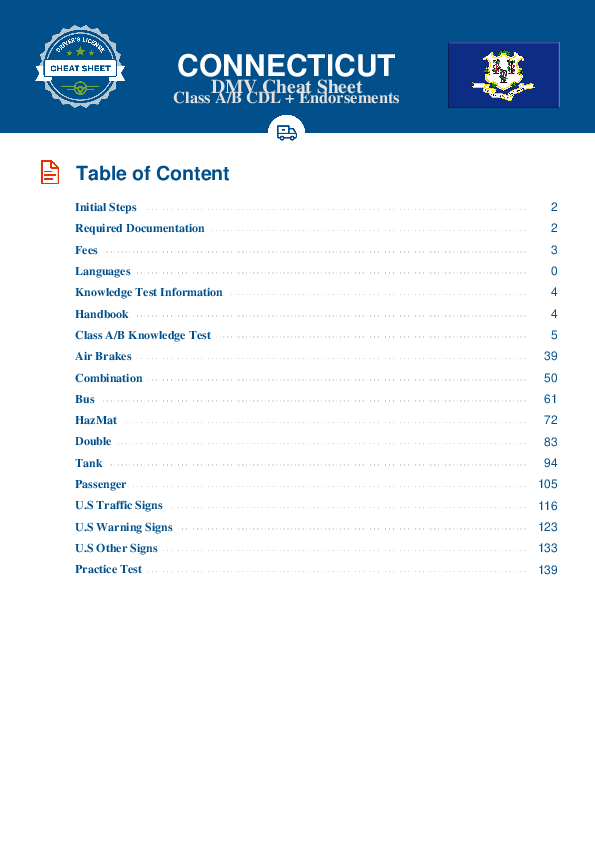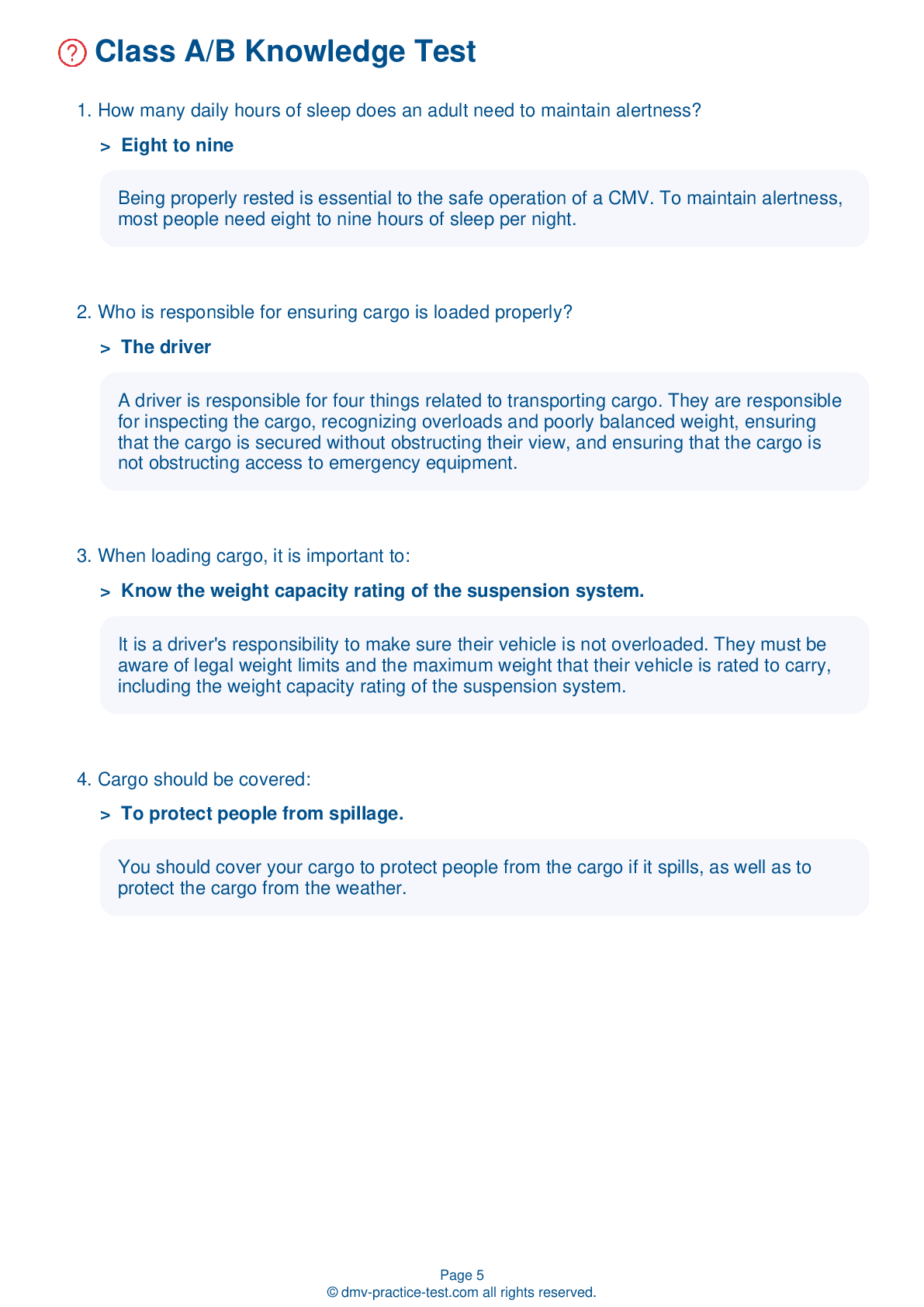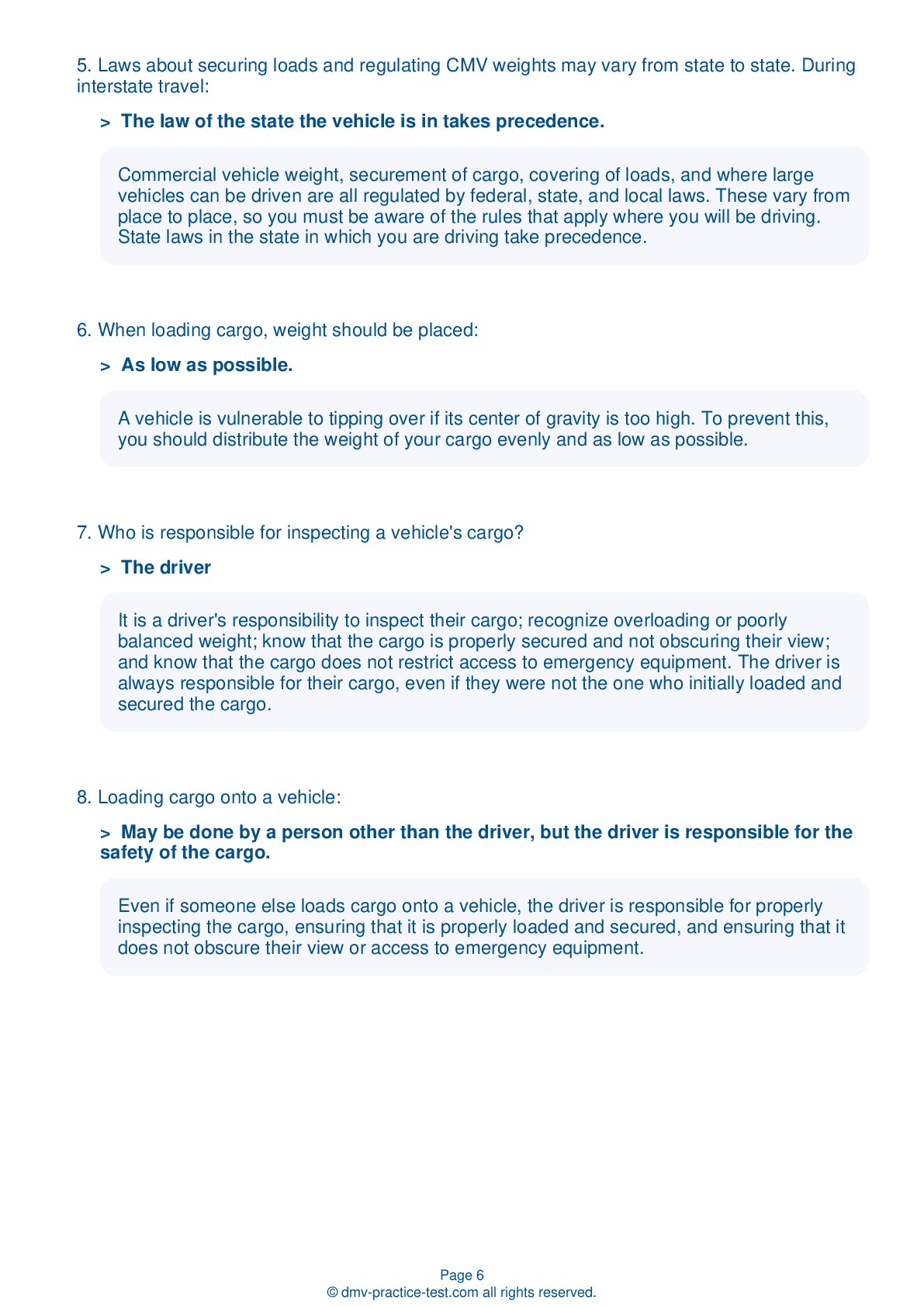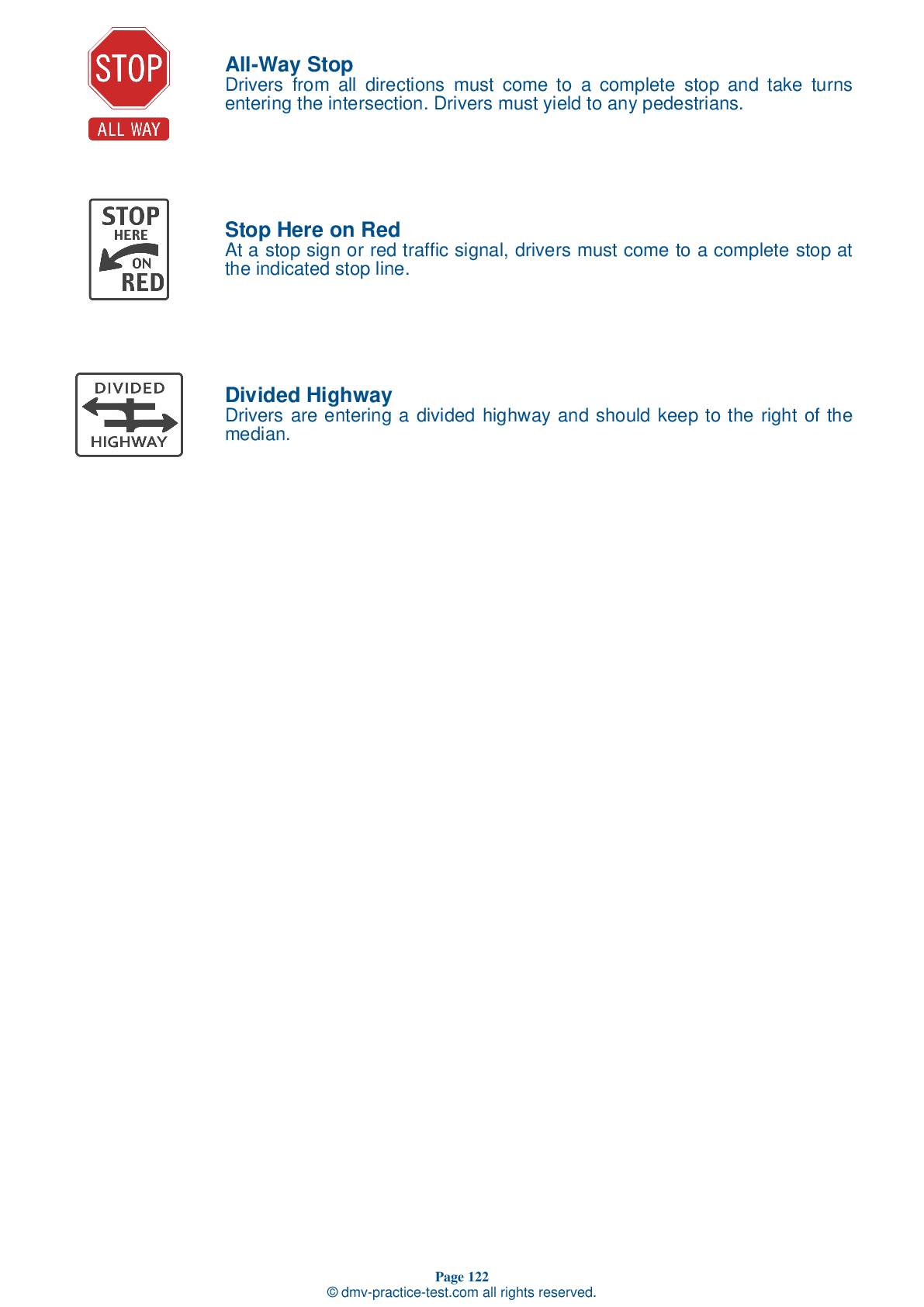Combination #1
Combination Vehicles Practice Test | Connecticut 2025 #1
Train for FREE online with our Connecticut CDL combination vehicle test. The official exam test consists of several obligatory parts, with all of them checking your knowledge of different blocks of road rules. If you need to obtain a CT combination license in 2025, practice as much as possible. Free sample tests published on our website will help you check and improve your knowledge and boost your grades. Please bear in mind that DMV requirements for issuing a combination license may vary from state to state.
20
16
20
1 . When driving a vehicle equipped with an Anti-Lock Braking System (ABS), brakes should be applied:
When driving a vehicle with ABS, you should brake in the same manner as you would in a vehicle without ABS.
2 . How much space should be between the upper and lower fifth wheel?
Before a trip, be sure to inspect all couplings. There should be no space between the upper and lower fifth wheel.
3 . When coupling a trailer:
When coupling, make sure you couple matching glad hands. They are often color-coded to help drivers avoid mistakes. Typically, blue is used for service lines and red is used for emergency lines.
4 . Trailers with low underneath clearance can present challenges when driving over:
Railroad-highway crossings may be difficult to cross when pulling a trailer with a low underneath clearance. In particular, both low-slung units and single-axle tractors pulling long trailers are especially challenging to drive over raised crossings.
5 . Combination vehicles:
Are easier to drive than single commercial vehicles.
Combination vehicles are usually heavier and longer than single commercial vehicles. For these reasons, they usually require more driving skill than single commercial vehicles.
6 . Fully-loaded rigs:
Should not be driven.
Because the weight of cargo gives them a higher center of gravity, fully-loaded rigs are 10 times more likely to roll over in a crash than empty rigs.
7 . All trailers made after ____ must be equipped with Anti-Lock Braking Systems (ABS).
All trailers and converter dollies manufactured on or after March 1, 1998 must have Anti-Lock Braking Systems (ABS).
2025 Connecticut | Frequently Asked Questions
In Connecticut, to acquire a CDL Tank endorsement, you must first have a Commercial Driver's License (CDL). You then need to pass the Tank Vehicle endorsement test, which covers the special driving rules for tank vehicles. The test usually consists of 20 multiple choice questions. You can prepare for the test by studying the Connecticut CDL handbook.
To obtain a CDL Tank license in Connecticut, you must first have a Commercial Driver's License (CDL). You should then pass the Tank Vehicle endorsement test, which covers specific rules for tank vehicles. It's also essential to have a good driving record and meet the physical requirements outlined by the Federal Motor Carrier Safety Administration.
While Connecticut doesn't mandate specific training for a CDL Tank endorsement, it's highly recommended to prepare for the endorsement test. Experience is not explicitly required, but a good understanding of tank vehicles and their operation is necessary. Training programs can provide practical knowledge and help improve your chances of passing the test.
Yes, in Connecticut, to get a CDL Tank endorsement, you must pass the Tank Vehicle endorsement test. This written test focuses on specific regulations and safety measures for operating tank vehicles. The test typically includes around 20 multiple choice questions. Studying the Connecticut CDL handbook can help you prepare for this exam.
The written test for the CDL Tank endorsement in Connecticut covers a variety of topics specific to tank vehicles. These include inspecting tank vehicles, driving tank vehicles, and safe driving rules. It also covers the dangers of liquid surge in partially filled tanks and how to handle high center of gravity loads.
The CDL Tank endorsement assessment in Connecticut focuses on the knowledge required for operating tank vehicles safely. The test does not assess specific driving maneuvers but evaluates understanding of inspecting tank vehicles, handling high center of gravity loads, managing liquid surge in partially filled tanks, and following related safety regulations.
Yes, there are limitations and constraints for drivers with a CDL Tank endorsement. They are required to follow specific regulations related to the transportation of hazardous materials in tanks. These regulations include proper loading, unloading, and handling procedures, as well as adherence to weight restrictions and route restrictions designated for hazardous materials transportation. Additionally, drivers must have additional training and certification for handling tanks carrying hazardous materials.
No, a valid CDL Tank endorsement is required to transport liquid or gas materials in Connecticut. This endorsement ensures that drivers have the necessary knowledge and skills to safely handle and transport these potentially hazardous materials. Driving without the appropriate endorsement can lead to penalties, including fines and suspension of your CDL.
The CDL Tank endorsement can be added to your existing Commercial Driver's License (CDL) in Connecticut. It does not require a fresh license application. However, you will need to pass the Tank Vehicle endorsement knowledge test and pay the necessary fees to add it to your current CDL.
Yes, to handle hazardous materials with a CDL Tank endorsement in Connecticut, you must also obtain a Hazardous Materials (HazMat) endorsement. This requires passing a separate knowledge test, undergoing a background check, and being fingerprinted. Additionally, you must comply with federal regulations regarding the transportation of hazardous materials.



